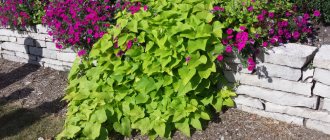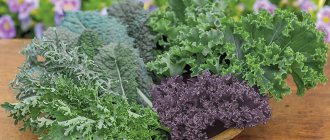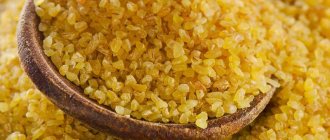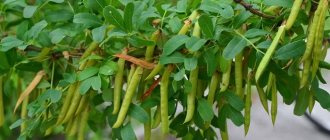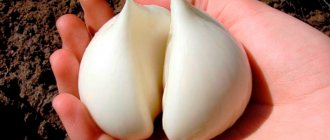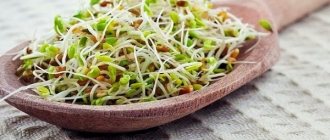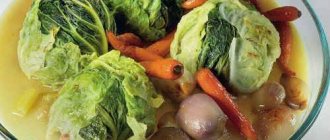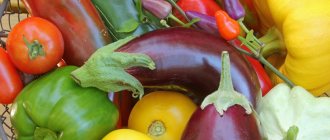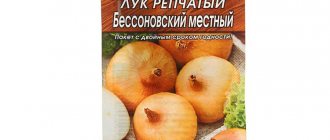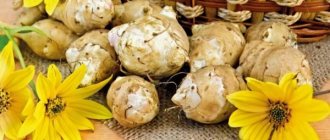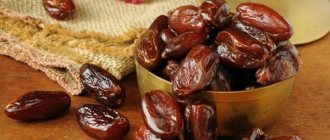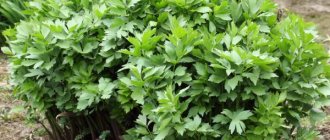Medicinal and beneficial properties of bean leaves
Common bean pods contain a storehouse of useful elements, which makes them indispensable for medicinal purposes.
- Arginine, which acts like insulin, lowers blood sugar and helps manage obesity.
- Due to the chemical composition that calms the nervous system, beans are recommended for use by people with increased nervous excitability and hypertension.
- Anti-inflammatory, antirheumatic and diuretic effects make the product indispensable in the fight against water-salt metabolism disorders, rheumatism, arthritis and gout.
- Dissolves stones in the kidneys and bladder.
- Eliminates dermatological problems (itchy allergic reactions, pyodermatitis).
- Used for chronic pancreatitis, cardiac edema and other cardiovascular diseases.
Bean shells are an excellent natural medicine, so instead of throwing them in the trash, you can get rid of a number of diseases by adding them to natural preparations.
The diuretic effect helps remove excess fluid, normalizes metabolic processes, cleansing the body of waste products. The leaves are used in the preparation of decoctions, extracts and tinctures, which, when added to the bath, improve the condition of the skin. Washing with this water gets rid of bags and circles under the eyes.
Useful Features
To evaluate the health benefits of beans, you should analyze its composition. It includes not only basic fats, proteins, fiber, carbohydrates, and starch. There are vitamins PP, B, tyrosine, ascorbic acid, flavonoids, lysine, histidine, and many important minerals.
Elements such as sterols, betaine, and tryptophan were identified. Included in the structural formula of acid are citric, malic, dextrin, nitrogenous substances, arginine.
In addition to flavonoids, anthocyanins were found in the stems and pod valves. Important medicinal properties:
- calming;
- diuretics;
- antibacterial;
- wound healing.
Beans have a beneficial effect on the functions of the liver and central nervous system. Helps increase appetite and improve sleep. Thanks to arginine, it helps treat type 2 diabetes.
It is beneficial for kidney and liver diseases, pathologies of the bladder, rheumatism, and heart failure. It is valued for its ability to strengthen teeth, treat tuberculosis, cystitis, nephritis, and dissolve stones localized in the urinary, gall bladder, and kidneys.
Beans promote the healing of stomach ulcers and skin lesions. Used for gastritis that develops against the background of low acidity. It is used in home cosmetology, allowing you to rejuvenate the skin and improve hair health.
It has a positive effect to enhance potency, removes waste deposits, toxins, and improves metabolism.
Collection and preparation of medicinal raw materials
The popularity of bean skins is explained by its safety and natural origin. Harvesting is done during the ripening period of the beans.
The above-ground part should be mowed down, and the bean pods should be freed from the beans. The grains will be used for food, but the leaves must be dried under natural conditions or special dryers must be used at a temperature of 50-60 ºС. Then the raw materials must be cleaned of foreign impurities, blackened and damaged valves.
If crushed raw materials are required, the flaps can be ground. The modern market offers various packaging options for the finished product. The product should be stored on racks in a well-ventilated area or in paper or fabric packaging. Shelf life: 3 years.
Contraindications
The main contraindication for bean pods is individual intolerance. Their use is prohibited for breastfeeding women, pregnancy, and predisposition to hypoglycemia.
To prevent harm to health, the recommended duration of the treatment course should not be exceeded. When treating children, permission from a pediatrician is required.
Bean leaves in folk medicine
Due to their healing properties, bean leaves have found active use in home therapy. The consumption of natural raw materials is used for medicinal and preventive purposes.
Decoction of the pods
Dry crushed leaves are used for brewing. 2 tablespoons of the product must be poured with warm boiled water (2 cups). Then the composition should be placed in a water bath for a quarter of an hour. The steamed wings should sit for another hour. If all the rules are followed, the plant will release maximum nutrients into the decoction.
After the liquid has cooled, the composition must be filtered, separating the liquid from the cake. To dilute the concentrate, add water until the original volume is obtained and boil again.
Use the product 3 times a day, preferably before meals. The amount of decoction at one time should be no more than half a glass. Since sediment forms in the liquid, it is recommended to shake it before use . The decoction is stored for a short time , so you should not prepare it for future use. It is enough to cook for a couple of days.
Infusions
Infusions, like decoctions, normalize metabolic processes, alleviate inflammation of the pancreas and kidneys, and also help cope with many other ailments:
To eliminate problems with joints, you need to place 1 tablespoon of crushed plant product in a thermos and pour boiling water (500 ml), strain after 3 - 4 hours.
Normalization of the cardiovascular system. Pour 1 tablespoon of raw material into a glass of hot boiled water, wrap it up and wait until the composition cools down. Strain and drink a third of the glass before meals.
Cystitis and pancreatitis. Stir 2 tablespoons of dry plant into 1 liter of water, place in a water bath and leave until the volume of water is reduced by half. Then strain and drink half a glass 30 minutes before eating. The course of treatment is a week.
Diseases of the genitourinary system. The recipe includes a mixture of ingredients: beans, bearberry, corn silk. Boil a mixture of 1 liter of water and 2 tablespoons of mixed herbs for 15 minutes. Filter and drink 5 – 6 times a day. Continue taking until relief occurs.
For weight loss
Fiber, which is part of the bean flaps, has a beneficial effect on the functioning of the intestines and promotes the removal of toxins. These qualities of the raw material make it possible to successfully use a decoction based on it for obesity.
You will need crushed dried bean hulls - 3 tbsp. l. It must be brewed in a heat-resistant container with 400 ml of water brought to a boil and heated for an additional 15 minutes using a water bath. After cooling, the broth is decanted through a double gauze filter. Drink 100 ml every six hours for a month.
How to treat diabetes with beans
Patients suffering from carbohydrate metabolism disorders are recommended to include the maximum amount of plant foods in their diet. Beans are no exception. In addition, all parts of the plant are eaten.
Recipes containing bean leaves:
- Grind the pods into powder using a coffee grinder and stir 50 g in 400 ml of boiling water. Leave in a thermos for 12 hours and consume 120 ml before meals.
- Mix a dessert spoon of crushed raw materials and pour boiling water (250 ml), leave in a water bath for a third of an hour. Then cool, filter and consume 3 dessert spoons 3 times a day.
- Add 4 tablespoons of the crushed product to a liter of cold water and leave for 8 hours. Squeeze with gauze and drink 250 ml before meals. The medicine relieves swelling accompanying diabetes.
- Boil 1 kg of dried raw material in 3 liters of water and take 250 ml in the morning on an empty stomach.
Preparation, drying, storage, freezing
Before using bean pods for medicinal purposes, it is necessary to take into account that in their raw, unripe form they are toxic.
The husks for drying are freed from ripened bean grains. The valves are sorted, rejecting damaged specimens. They are dried in the shade and poured into textile bags, paper or cardboard boxes. If the process is carried out in dryers, then the temperature is set within 50-60 degrees.
Keep containers with dried raw materials in dry conditions. The shelf life is three years. For freezing, take pods of asparagus beans before the stage of fruit formation in them. The raw materials are washed, dried on a napkin, and the noses and tails are cut off. Cut into several parts. Various freezing techniques are practiced:
- Raw prepared bean products are laid out in one layer in the freezer. This will allow you to get individual frozen pieces that are poured into a bag.
- Most often, the pods are blanched before freezing. For this purpose, immerse them in boiling water for three minutes. Then they are quickly removed with a slotted spoon and placed in cold water, to which ice is first added. Lay out on a linen napkin. When the moisture has drained, place it in the freezer.
- You can freeze the boiled pods. For this purpose, the prepared raw materials are boiled at a minimum temperature for 10 minutes in salted water. After draining the liquid, the cooled bean pieces are frozen in portions in small containers or bags.
Article for you:
Useful properties of avocado peel, how to use it, whether you need to peel and eat it
When choosing the most effective recipes for treating a particular disease, you must first obtain medical advice. Based on bean leaves, folk medicine practices different options for making medicinal products.
The use of bean leaves in cosmetology
Due to the high saturation of the valves with useful elements, they are popular in cosmetology. The antioxidant content restores tone to the epidermis and promotes cell regeneration. Antiseptic and therapeutic effect cleanses the skin of suppuration.
The extract of the plant product is used in the production of caring cosmetics that help strengthen elastic fibers and activate collagen production. Experts recommend using cosmetic products containing bean leaves for people with problem skin.
For flowers
It is known that beans, like all legumes, are rich in nitrogen. This allows you to use the broth left after cooking beans to stimulate the growth of house plants.
Article for you:
Chamomile decoction: what it helps with, how to prepare it, use in folk medicine and cosmetology
It is necessary to use if there is a lack of nitrogen fertilizers, which is expressed in the pale color of the leaf blades, slow growth of shoots and leaves.
You can water the flowers with water in which the beans were previously soaked before cooking. Starch and other nutritional elements remain in it.
Contraindications and harm to bean leaves
Despite the enormous benefits, bean skins have a number of contraindications. Experts do not recommend using products containing herbal products if:
- pregnancy;
- breastfeeding;
- presence of an allergic reaction.
Although the flaps are of great benefit to patients suffering from diabetes, it is important to consult with your doctor before taking the medication.
In some cases, herbalists allow pregnant women to take healing tea from the valves, for example, if it is necessary to relieve swelling, and diuretics are contraindicated. In this case, taking medications must be done strictly under the supervision of a doctor.
Indications for consumption
Due to the content of hemicellulose, polyphenols and flavonoids in the plant, preparations from bean leaves have beneficial properties and are prescribed by nutritionists and gastroenterologists for:
- getting rid of excess fat deposits;
- facilitating intestinal motility;
- preventing constipation;
- improving digestion and eliminating rotting processes in the colon;
- removal of food toxins and poisons;
- rapid absorption of vitamins, minerals and microelements;
- stabilization of the microflora of the gastrointestinal tract.
In addition, due to the large amount of fiber contained in the plant, the valves contribute to the renewal of the gastric mucosa. When used daily in the diet, the product neutralizes the formation of polyps in the intestines, which over time transform into malignant and benign neoplasms.
How to lower blood sugar (video)
If you are prone to hypoglycemia, it is recommended to refrain from using the valves, as they lead to a decrease in the concentration of sugar in the blood, which threatens the development of hypoglycemic coma (unconsciousness due to low glucose levels).
Legumes can be used both in one-component recipes and as part of combined products. Moreover, each component must be prepared only in environmentally friendly places and properly dried. To avoid poisoning, it is prohibited to consume green beans.
Vitamin cocktail
Empty bean pods are a real vitamin cocktail. They contain glucokinin, trigonelline, stigmasterol, thiamine, carotene, hemicellulose, vitamins B6, C, E.
In addition, the composition of beans and leaves includes substances important for the body.
Micro- and macroelements:
- copper;
- iron;
- sodium;
- calcium;
- zinc.
Organic acids:
- apple;
- ascorbic acid;
- malonova;
- lemon
Flavonoids:
- quercetin;
- kaempferol.
Amino acids:
- tryptophan;
- leucine;
- arginine;
- tyrosine;
- methionine;
- choline;
- lysine;
- betaine;
- asparagine;
- tyrosine
Contraindications and harm
There are very few contraindications for the use of sashes. The first is an allergy, an individual intolerance to beans or leaflet-based medications.
It is also not recommended to take healing infusions and decoctions of bean husks if:
- pancreatitis in the acute stage;
- cholecystitis;
- gastritis with high acidity;
- stomach ulcer;
- intestinal dysfunction;
- colitis.
People suffering from hypoglycemia should strictly not use decoctions and infusions of the husk. The medicine reduces already low glucose levels, causing the patient to fall into a glycemic coma.
Those who suffer from salt retention in the body should be wary of treatment with valves.
Benefits for the body
Bean hulls have many beneficial properties. Thus, products based on leaflets normalize metabolism and the production of hormones, enzymes, and proteins.
One of the most famous and valuable properties of bean leaves is the ability to reduce blood glucose levels and normalize blood pressure. In addition, they have antimicrobial, diuretic and anti-inflammatory effects.
In cooking
Beans are eaten throughout the year. They keep well in a dried state. It is recommended to soak them for 8 to 12 hours before cooking. This process is necessary for two reasons:
- The beans soften, which subsequently reduces the boiling time.
- When kept in water for a long time, oligosaccharides dissolve. These are substances that are not digested after eating, which causes increased gas formation and a slowdown in the digestion process.
Green beans or so-called asparagus beans are used. It is an unripe bean that can be canned, boiled, frozen, stewed, or fried.
The pods have a pleasant taste and are included in a variety of dishes. You can prepare healthy snacks using simple recipes:
- Boil the beans soaked in the evening until soft. Place in a frying pan with onions fried in lard.
- Pass twice-boiled beans with boiled carrots and fried onions through a meat grinder. Add dried herbs or pepper to the pate to taste.
- Fry a finely chopped large onion. Combine with a glass of boiled beans, crushed two cloves of garlic and half a cup of crushed walnut kernels.
There are many options for delicious dishes with beans and pods. They not only diversify the menu, but also provide health benefits.
